For years, the Baron palace caught the imagination of Heliopolis residents and all Cairenes alike. The mysterious structure had stayed neglected for years, only to one day rise from the ashes as a project needing governmental restoration and renovation in the last decade.
Once the work was done, costing a hefty sum of over 100 million EGP, the Heliopolitan structure emerged under, literally, new lights and a new coating of paint – its new look sparking awe and derision concomitantly from many whose opinions on the renovation work were split.
Regardless, the Baron became a new attraction site from the heart of Heliopolis, deemed fit enough to receive visitors. As such, Egyptian Streets ventured to the historic monument for a glimpse of the work.
The entrance of the palace is located, interestingly enough, on a side street called Ibn Batouta, and not on the main Al Orouba street. There, there is a ticketing kiosk where tickets run for 20 EGP (10 for students) and 100 EGP for foreigners (and 50 for students). Photography with cellphones is free of charge and allowed, however DSLR cameras need their own tickets for 50 EGP.
There is also the additional ticket of the ‘Roof’ of the baron itself, for 50 EGP. This addition is highly recommended for those curious to see the roof structures of the palace and who are keen on seeing a distinct view of Korba from a new, open space.
OUTDOOR AREA
Right beyond the ticket and security entrances, a Heliopolis tramway is located on right side. It is meant to immortalize the importance of the railway system that was a fundamental aspect of Heliopolis, and which the Baron had a direct implication in since the beginning of the 20th century. At first glance, the tramway may look like a haphazard addition, however the museum and display within the palace itself draw the connection between the Baron, Heliopolis and the railway system in Cairo quite well.
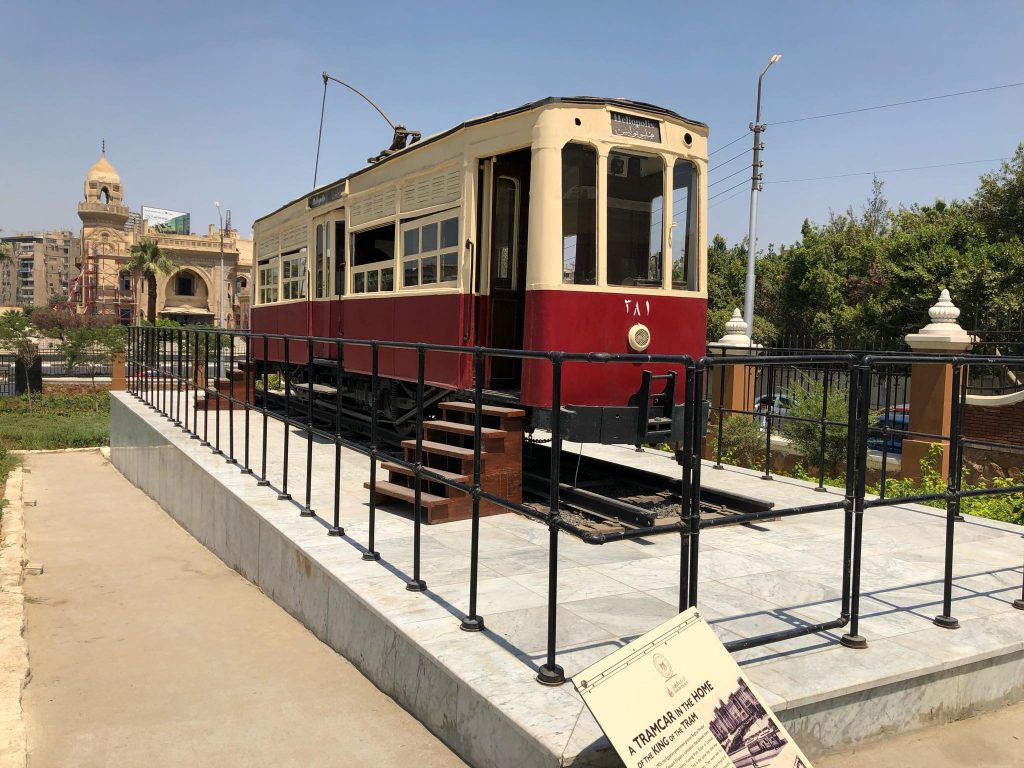
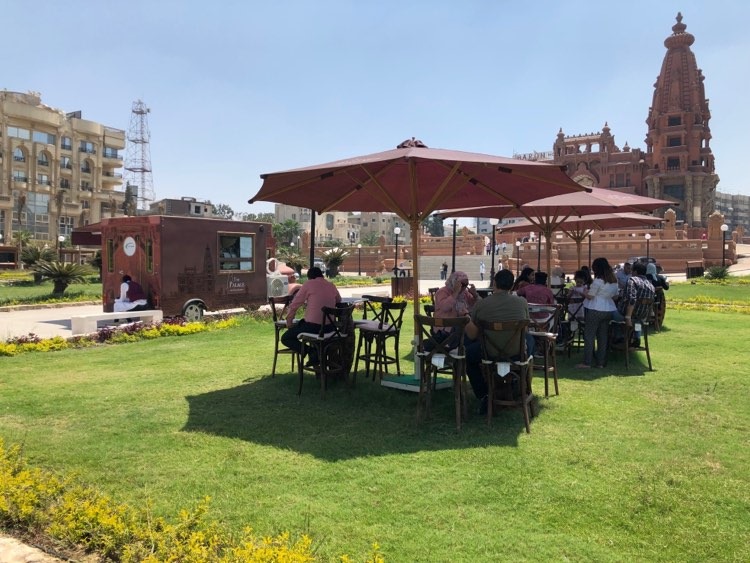
The outside area beyond the tramway is clean and spacious, with a quaint and small garden. There is also a small truck where visitors can purchase simple beverages from, and a shaded seating area.
ENTERING THE PALACE
Due to the restrictions placed on sites around Egypt due to COVID-19, the palace must be visited within 45 minutes and the guards within the palace do pay attention to the time limit, namely as the place gets crowded, especially the roof.

One can access the Baron from its main (inside) entrance, walking up a stairway which is fronted by two decorative cars and then it is punctuated with various standing statues. One can spot the statue of David, a Greek goddess, which are quite popular among picture-snapping tourists.
Each level elevation is also framed by a fence which is decorated and sculptured with figures and shapes reminiscent of the east, namely that of a hindu goddess.
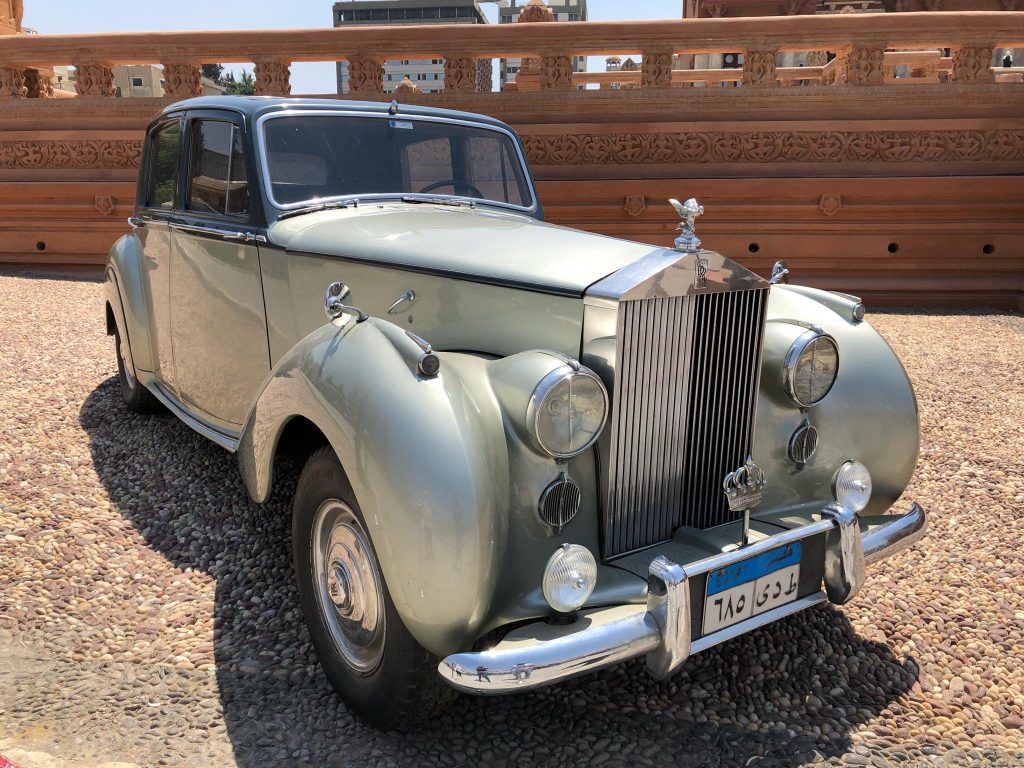
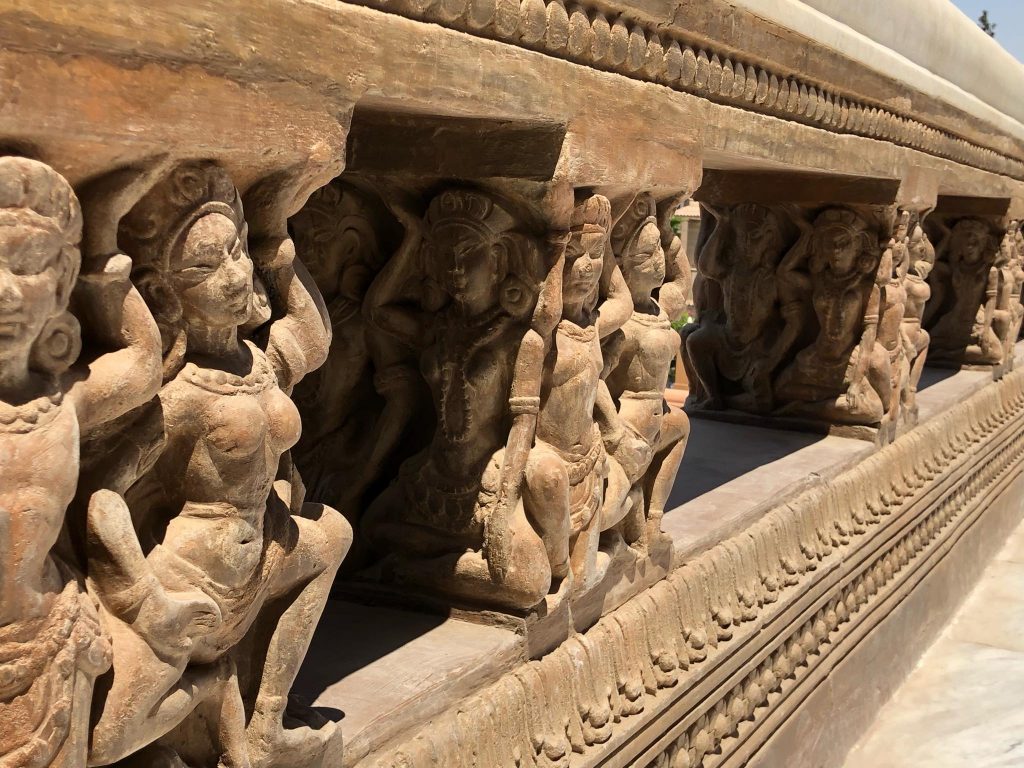
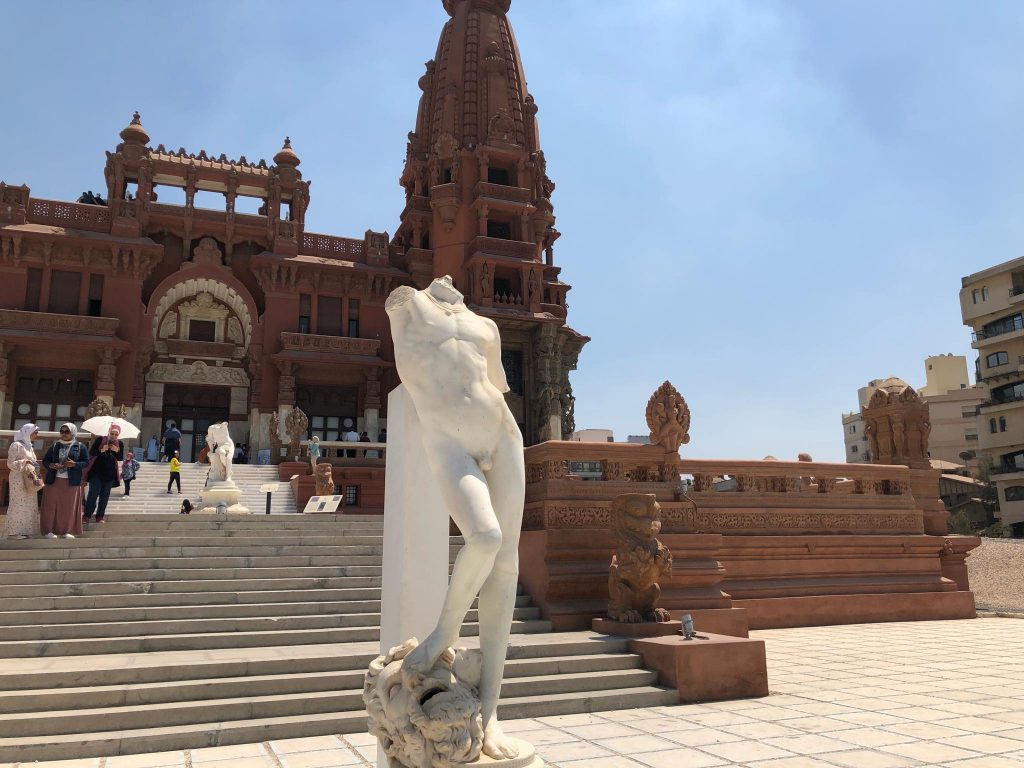
Once one makes his or her way to the top, to the main doorway of the Palace, they are required to wear a mask into the air-conditioned palace to take on the exhibitions which are spread out through the ground floor and those above.
At the ground floor, the basic history of the palace is tackled as well as the identity of the baron Empain. There is also a short film one can watch about the history of Heliopolis and the baron’s story. Then, one makes his or way to the second floor through the stairs, marveling at a display featuring the ancient history of Heliopolis to understand how far back the area truly dates.
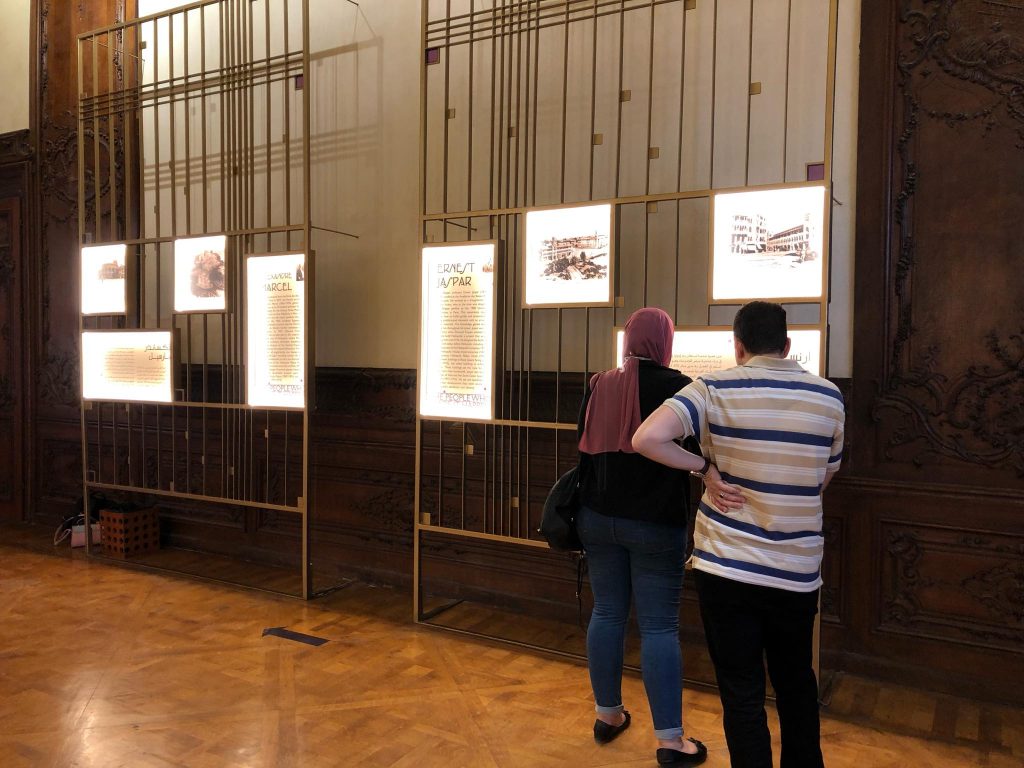
Once on the second floor, there are various rooms to enter: the bathroom covered in bright green tiles, an exhibition hall tacking the modern-day history of Heliopolis and construction plans of the palace as well as nearby structures.
All display panels are bilingual, in Arabic and English. They are well-lit, interesting and convey a clear narrative to the site; they also connect the history of the monument with that of the area, its inhabitants, and the baron himself.
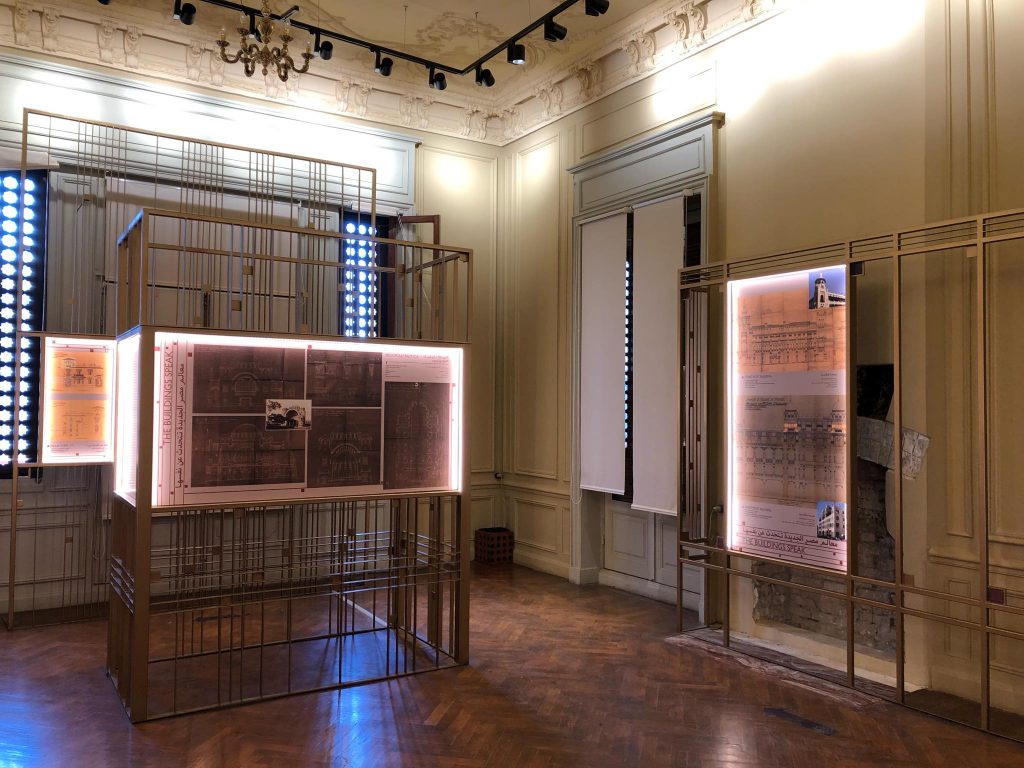
There is also a room dedicated to the restoration of the palace, where the steps of the restoration work done by the Ministry of Antiquities are outlined and explained. Additionally, there are visuals to accompany the explanations.
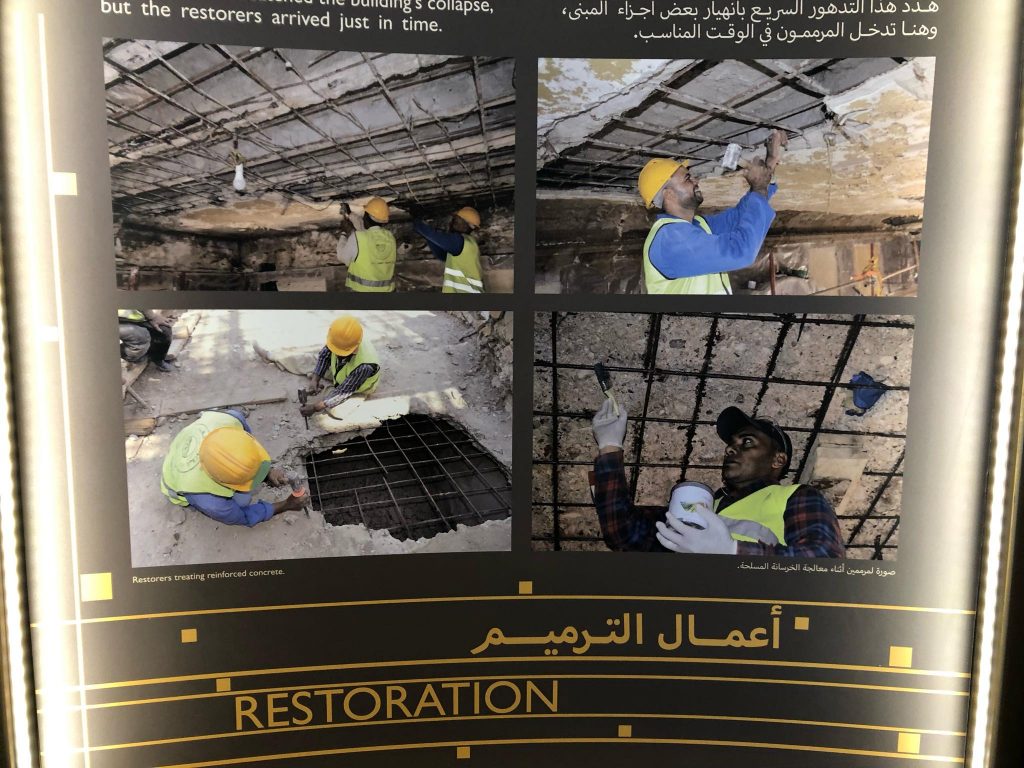
Finally, the roof, which gives a 360 degree panoramic view, can be accessed through a spirally wooden staircase. This is truly the most fun part of the visit as there are vertical structures, heavily decorated and interestingly carved, abundantly throughout the terrace. These structures make for the upper part of the chimneys spread through the grounds below.
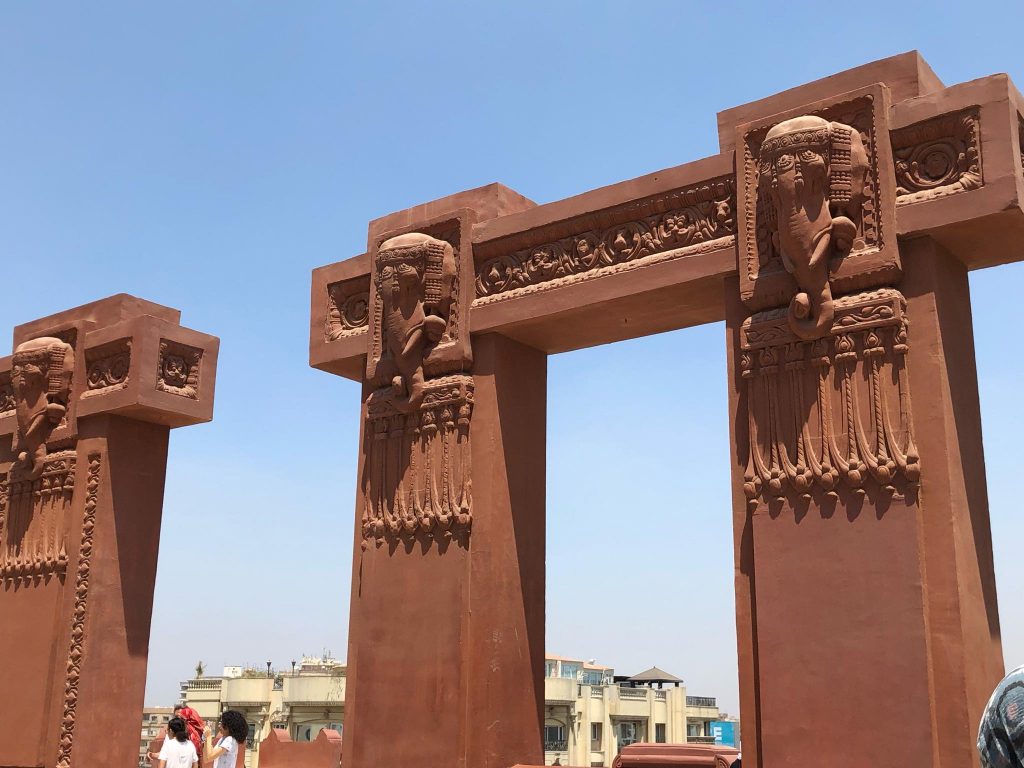
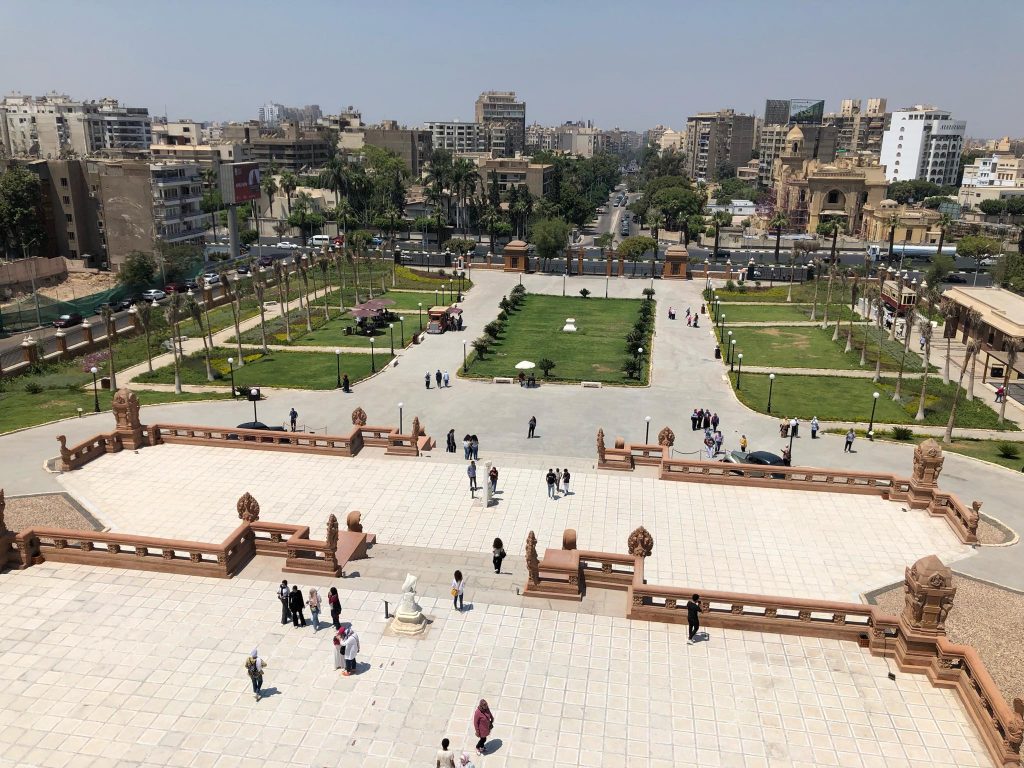
This is also a favorite spot among many visitors who take the opportunity to take photos with the Heliopolitan view in the background.
Overall, the Baron makes for an entertaining and informative visit. It is suitable to all ages and is the right blend of explorative, educational, and unique. The Ministry did a solid job at renovating the space inside, as to turn the formerly abandoned place into a space the public can learn about. If only this initiative can be reproduced at other abandoned spaces in Cairo – namely downtown and Garden city which host a plethora of fascinating structures that are left to gather dust.
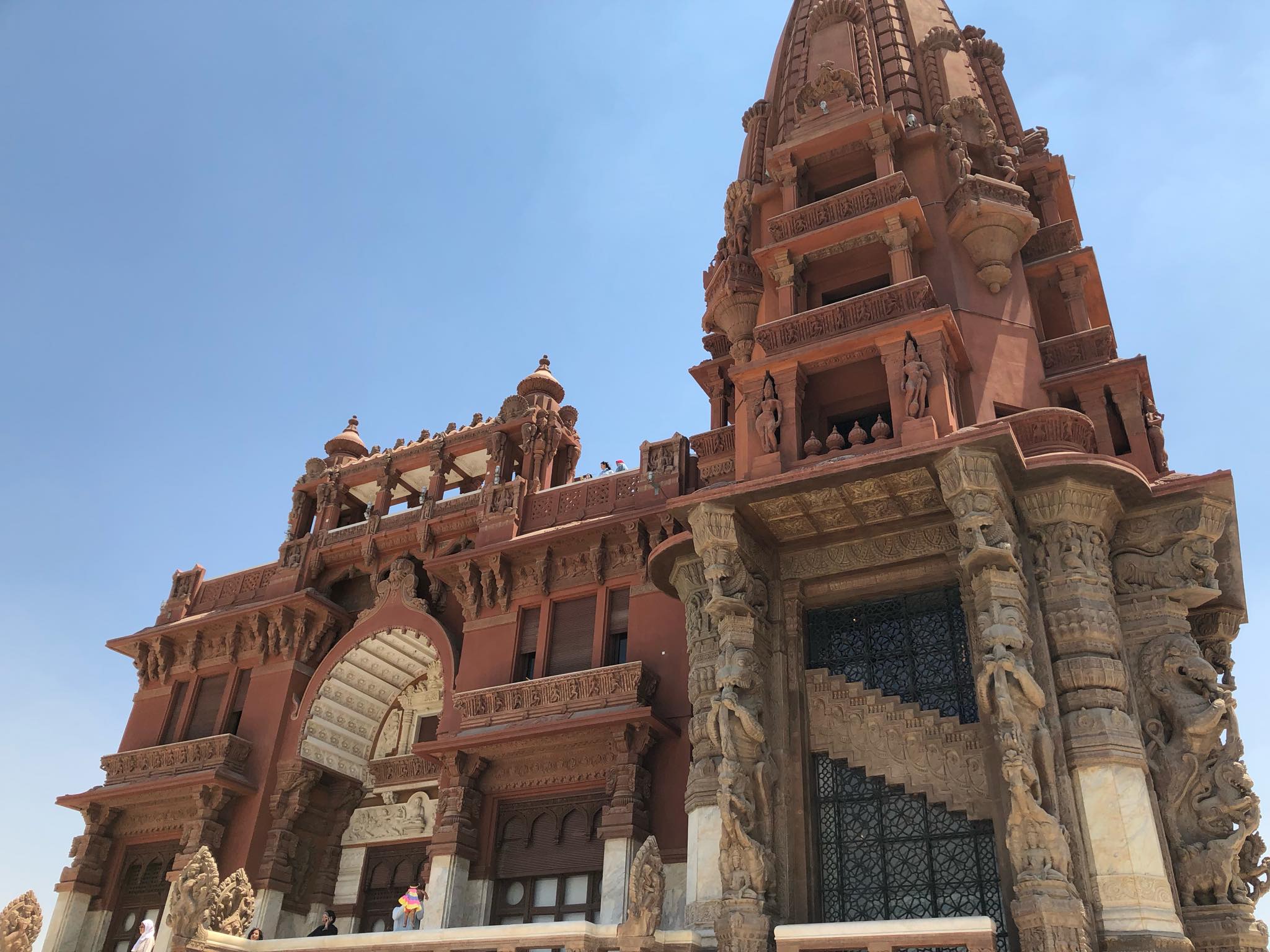



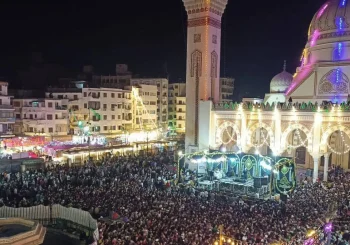

Comments (8)
[…] Review of Baron Empain Palace: Must Visit for Heliopolis History Fans […]
[…] Review of Baron Empain Palace: Must Visit for Heliopolis History Fans Heritage and Nostalgia: How One Man is Trying to Save his 100-Year-Old Family Home […]